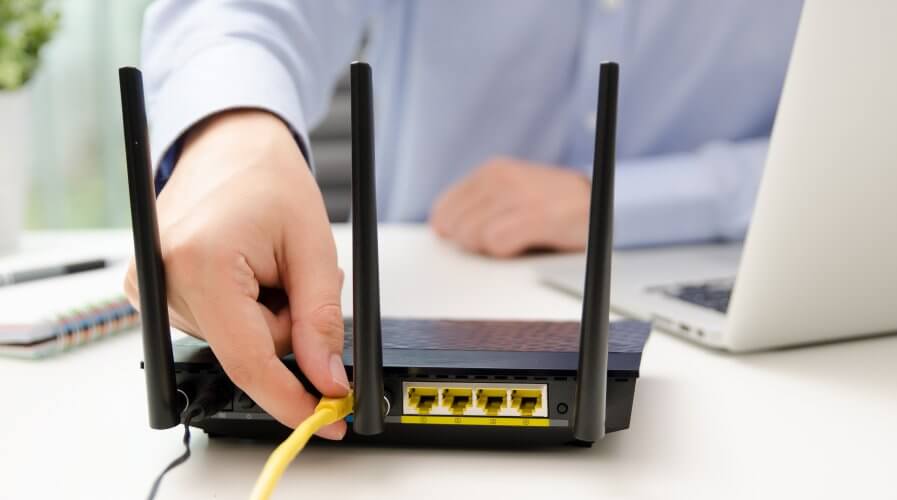
Routers act as the gate to your virtual network. Securing it is the first step to securing your connected devices. Source: Shutterstock
Watch out for the attackers coming in through your virtual door
MIRAI botnet took down the internet in 2016. That attack took advantage of poorly secured IoT.
IoT makes life convenient, but with so many connection points, it can be difficult to keep track and manage all the connected devices. Most importantly, it becomes difficult to secure the network.
Security doesn’t have to be difficult though. Simple steps can help deter many would be attackers unless you are some high-profile personnel with valuable assets.
As with houses, securing your building’s connected network starts with locking the gate, which in this case would be the router. The router acts as the gateway for all internet traffic that passes through.
While it’s not to say shut off your router to prevent all forms of communication, it might be wise to set a strong router password. Opt for the Wi-Fi Protected Access II (WPA2) protocol instead of the more widely used and easily compromised Wired Equality Privacy (WEP).
If you lost your keys, you’d change the lock of your house. The only thing is you’d never know who has access to your passwords. Especially when passwords are given to so many employees. A frequent change in passwords is important.
Of course, no two locks in the house are the same in the house, and neither should any two passwords be. Long complex passwords act like heavy duty locks. Things like birthdays are like gym locker combination locks – easy to break.
An important aspect of having connected devices is a platform that you can refer to for all the records of all connected devices. Log histories are like sign-in books. It shows who’s visited and what they’ve done. Going through the logs allows you to check if strangers have been spying on your devices.
The biggest and most neglected connected vector are smartphones. Most connected devices are controlled by mobile apps. Software updates are important to get your devices up to date with the latest patch, which sometimes include patching up holes in your security.
Installing security apps on mobiles can also keep malicious apps and codes at bay.
Buildings are increasingly relying on integrated systems whether to control lights or air conditioning. Thus, security becomes more important than ever.
Unfortunately, today’s smart devices still prioritize design and function before security. With on average 11 connected devices in smart homes, as reported by Trend Micro, there’re lots of attack vectors to watch out for. If the gate isn’t secured, there’s a lot of potential danger lurking, right from the camera at your doorstep.
READ MORE
- Strategies for Democratizing GenAI
- The criticality of endpoint management in cybersecurity and operations
- Ethical AI: The renewed importance of safeguarding data and customer privacy in Generative AI applications
- How Japan balances AI-driven opportunities with cybersecurity needs
- Deploying SASE: Benchmarking your approach




